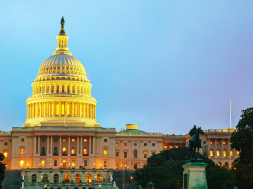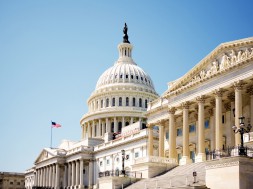
Schools Want/Need Clarification on Gainful Employment
APSCU submits questions to the Department of Education, receives ambiguous responses
By The Association of Private Sector Colleges and Universities, Reprinted with Permission
The Association of Private Sector Colleges and Universities (APSCU) drafted the following questions and submitted them to the Department of Education on behalf of career education institutions. Following the questions are the responses by the Department of Education.
Q1: Say a school that has two similar programs already existing – a two-year program and a four-year program. Say the two-year program is solid but the four-year program is failing. Could the school create a similar program to the two-year program or does the failing four-year program mean they can’t create any new programs or can they expand the high performing two-year program?
Department’s answer:
We cannot answer this question in general terms. You indicate that the two and four year programs are similar, however it is not clear exactly how they are similar. For example, do they share the same four-digit CIP code such that they are considered to be “substantially similar” under the applicable regulation? However, 668.410(b)(2) is explicit with regard to the restrictions on failing or zone programs, and the establishment of new programs that are similar to those which are failing or in the zone (note that the definition of a substantially similar does not distinguish between program level of offering). It may be the case that an institution is not permitted reestablish the eligibility of a failing/zone program that is ineligible or was voluntarily discontinued; or establish the eligibility of a substantially similar program (according to the specifics of 668.410(b)), however none of the consequences of the D/E rates measure involve a blanket prohibition on the creation of new programs. That point notwithstanding, there may be other reasons why an institution may not establish any additional programs, e.g., the school is provisionally certified. Lastly, we are not certain what is meant by expanding a high-performing two-year program. If “expansion” involves establishing the eligibility of substantially similar programs, refer to the specifics of 668.410(b) and the discussion above.
Q2: Does the substantially similar measure kick in after first draft rates come out or only after first final rates are released?
Department’s answer:
This is addressed in 668.410(b)(2)(ii) which states: An institution may not seek to reestablish the eligibility of a program that is discontinued voluntarily after receiving draft D/E rates that are failing or in the zone, or establish the eligibility of a program that is substantially similar to the discontinued program until…
Q3: Institutions can challenge loan debt reported by the Secretary but have no way to challenge salary data, especially since it will be reported in aggregate, not in individual form, and the institution has no authority to object. “In a challenge…the Secretary does not consider … Any objection to the mean or median annual earnings that SSA provided to the Secretary;” §668.405(f)(3)(i). But further in the Regulation it states that an “alternate earnings appeal” may be made based on an institutional survey or state sponsored data system, but that the institution must include “the alternate earnings of all the students who completed the program during the same cohort period…or a comparable cohort period provided by the institution…” §668.406 (a-b) (emphasis added). Thus, any survey conducted by the institution would need to include responses from ALL students in the program for that cohort period and salaries for ALL students garnered from a state sponsored data system. The likelihood of obtaining either is virtually nil, especially if students should migrate from one state to another and would thus no longer be included in the original state’s database. So what, if any, recourse does an institution truly have if it believes the mean and median annual earnings provided by the Secretary is inaccurate?
Department’s answer:
The recourse for an institution that believes mean or median annual earnings provided to the Secretary are either inaccurate or unrepresentative of actual earnings lies with D/E rates alternate earnings appeals under 668.406. Survey requirements for appeals based on alternate earnings from an institutional survey are found in 668.406(c) and reference use of the standards included on an Earnings Survey Form developed by NCES to obtain earnings information of the students described in paragraph (b)(3) of the same section (namely all of the students who completed the program during the same cohort period that the Secretary used to calculate the final D/E rates). NCES standards do not require that survey data results actually be obtained for all of the students described in paragraph (b)(3); rather it must be demonstrated that annual earnings data were obtained for more than 50 percent of students in the cohort period. This mirrors the requirements for appeals based on State-sponsored data systems found in 668.406(d).
Q4: If an institution determines it will no longer accept new students in a particular academic program but chooses to keep the program active while remaining students complete, is the institution still required to post warnings on its website if that program is in danger of losing Title IV funding (even if remaining students are properly notified per §668.410)?
Department’s answer:
Yes. 668.410(a)(7) requires that within 30 days of receiving notice from Secretary that the institution must provide a student warning for the program, the institution’s disclosure template (which must be provided, among other possible locations, on the institution’s website) must be updated to include that warning. An institution’s decision not to accept additional students into a particular program and/or its continued proper notification of students according to the requirements of 668.410 does not obviate this requirement.
Q5: Institutions are adding and removing programs as the ebbs and flows of workforce needs change. It is highly probable that new programs were “in the hopper” prior to the release of the GE Regulation in October 2014, although may not have been approved or launched at that time. Some of those programs may be “substantially similar” to existing programs, but “substantially similar” was not an issue at the time applications for these new programs were submitted. When exactly (what date) does “substantially similar” kick in?
Department’s answer:
Refer to the answer and regulatory citation for Question 2. Once draft D/E rates that are failing or in the zone have been received by the institution, it may not establish a substantially similar program.
Q6: If an institution has an existing Bachelor’s program today (November 2015) – for example, Criminal Justice – and is seeking to add an Associates level Criminal Justice Program within the next few months, if that Bachelor’s program fails the metric (per the final notice of determination, expected January 2017) what effect (if any) would be had on the Associates Criminal Justice Program (likely approved and implemented by summer 2016)?
Department’s answer:
As noted in the answer for Question 1, the language in 668.410 that restricts the establishment of substantially similar programs, does not make distinctions based on program level. If the institution is, under the provisions of 668.410, prohibited from establishing the eligibility of programs substantially similar to (using your example) a Bachelor’s degree in criminal justice, then it may not create any new program with the same four-digit CIP code irrespective of whether the new offering would be at the Associates level.
a. Would it make a difference if it was an existing Associate degree program and the new program instituted was moving higher to a Bachelor’s?
Department’s answer:
No. the same logic stated above is applicable.
Q7: There is a 3-year period of ineligibility for programs that Fail the metric. If a program is mandatorily ineligible due to failure of the metric, and the institution seeks to launch a new program in a similar category but with a CIP Code that does NOT have the first four digits the same, would the institution still have to successfully argue the new program is NOT substantially similar, or would the fact that the first 4 digits are NOT the same suffice?
Department’s answer:
Per 668.410(b)(2)(4), even if the programs have different four-digit CIP codes, the institution must still provide an explanation of how the new program is not substantially similar to the ineligible or voluntarily discontinued program.
Q8: If an institution wants to challenge data found on the completers list (either why a student should be excluded or why a student should be included) what type of evidence is required of the institution?
Department’s answer:
Creating the list of students is discussed in 668.405(b). It should be noted that the list is created based upon data provided by the institution. To that extent the institution should be confident of the list’s accuracy. The department does make the determination as to what students are to be removed from the list according to the exclusions under 668.404(e). As explained in 668.405(c)(2)(i) the institution may, in order that the list be corrected, provide evidence showing that a student should be included on or removed from the list per allowable exclusions. This would constitute the evidence required of the institution.










